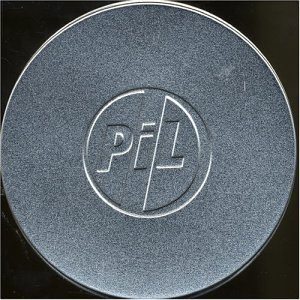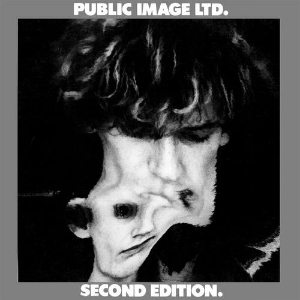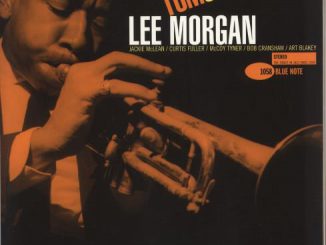

Records are round and album covers are square. Well, usually.
Some of the most interesting packages in album history break with tradition, either by changing the shape of the vinyl (a trick we seem to see every Record Store Day) or the sleeve. The Rolling Stones went with an octagonal cover for Through the Past, Darkly (Big Hits Vol. 2), for example, and classic rockers the Faces and Grand Funk Railroad both went round during the ’70s.
And so John Lydon‘s second post-punk/post-Pistols outing wasn’t the first to defy the square-circle paradigm, but 1979’s Metal Box raised the bar for album covers. That’s not quite right: Public Image Ltd.’s sophomore album completely ignored the bar for album covers.
Image was important to Lydon at least as far back as his Sex Pistols days, though the debate continues to rage over whether the band or Svengali manager Malcolm McLaren were responsible for that. Lydon has claimed, for example, that he modeled Johnny Rotten after Laurence Olivier’s Richard III – an interpretation of an interpretation. The band famously jettisoned bassist and songwriter Glen Matlock for the less talented but image appropriate Sid Vicious, but fortunately were savvy enough to ask Matlock to play bass on their debut (and only) studio album. No doubt there’s a lot of substance to the Pistols’ music, but there’s a tremendous amount of image there, too.
But the best evidence that Lydon was his own marketing-conscious man is right there in the name of his next band: Public Image Ltd. They named their debut album First Issue and packaged it like a gossip magazine, simultaneously mocking and embracing popular culture in a manner similar to Never Mind the Bollocks’ soap box design.
For their next album, PiL would push things even further. Guitarist Keith Levene elaborated in an extensive interview with Perfect Sound Forever:
It was a bit Sex Pistoly… We wanted to put out something that would f— up the other album covers if you put it into your collection. Then we were thinking, ‘How can we put the record in a can and make it hard to open it?’
The authors of The Art of the LP contend that those two ideas were to package the album in “a sardine-type can, which needed a key to peel back the cover, or a sandpaper outer sleeve… in order to ruin any album on either side of it on a shelf.” The latter idea was realized the following year by Manchester post-punkers the Durutti Column for their album The Return of the Durutti Column, and while Metal Box was not exactly a “sardine-like can,” one can see the relationship.
Levene continues:
We all came up with the concept of the metal box. The way it came together was that we got it made at this factory called the Metal Box. It was just the logistics between the idea and how we could get it made up, which made it look the way it did and made us put three pieces of vinyl in it.
The final product is often described as a 16mm film can with the PiL logo embossed upon the front. The three pieces of vinyl – required because they ran at 45 RPM rather than 33 1/3 for maximum sonic range – were separated by sheets of paper and tended to wedge themselves into the can. Not everyone agrees that the cover is a film canister, though. Levene offered the Guardian an alternative description: “It cost us £33,000 of our advance to put it out as three 12in singles in a tin shaped like a pill!”
PiL in a pill; Johnny Rotten as Olivier as Richard III. The whole thing is so meta that it’s brilliant.
Warner Brothers, the band’s U.S. label, didn’t want anything to do with such esoteric packaging. Instead, they put a funhouse image of Levene on the standard 12″ cardboard sleeve and retitled the album Second Edition. There are some other differences: Second Edition is a double rather than a triple album and the song sequence is a little different. But for purposes of this conversation, the big difference is the sleeve.
Allegedly, only 60,000 copies of Metal Box were manufactured, but Levene told his Perfect Sound Forever interviewers that “I know that they put out loads more than the original sixty.”
In the years after Metal Box, custom packaging became common. Post-punk darlings XTC went with a round cover for the first printing of 1984’s The Big Express, and we can’t forget Prince‘s “Batcan” edition of the Batman soundtrack, which is a bat-replica of its metal predecessor. The popularity of lavish box sets over the last 20 years has made such packages ubiquitous.
The materials used for Metal Box were far from museum quality. Acidic fingerprints from decades past turned to corroded blemishes on many surviving examples; others developed a more even patina that’s charming in its own way. If you luck into a mint condition copy, you can expect to pay a couple hundred bucks.
That’s the bad news. The good news is that in the last decade, a couple of more reasonably priced reissues (both on CD and LP) have hit the secondary market. You can pick up one of each without breaking a Benjamin if you shop smartly. And if all you really want is the music (which is really what it’s all about, after all), you can pick up Second Edition in any used record store for just a couple of bucks.
Via Diffuser FM
You can find vinyl, CDs and more by PIL at eil.com
…and just in case you forgot how good PIL were….





Be the first to comment